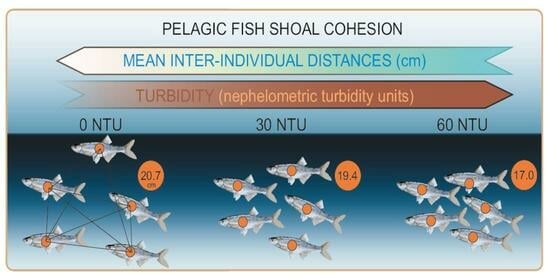The Effect of Turbidity on the Behavior of Bleak (Alburnus alburnus)
Abstract
Share and Cite
Horka, P.; Vlachova, M. The Effect of Turbidity on the Behavior of Bleak (Alburnus alburnus). Fishes 2024, 9, 3. https://doi.org/10.3390/fishes9010003
Horka P, Vlachova M. The Effect of Turbidity on the Behavior of Bleak (Alburnus alburnus). Fishes. 2024; 9(1):3. https://doi.org/10.3390/fishes9010003
Chicago/Turabian StyleHorka, Petra, and Monika Vlachova. 2024. "The Effect of Turbidity on the Behavior of Bleak (Alburnus alburnus)" Fishes 9, no. 1: 3. https://doi.org/10.3390/fishes9010003
APA StyleHorka, P., & Vlachova, M. (2024). The Effect of Turbidity on the Behavior of Bleak (Alburnus alburnus). Fishes, 9(1), 3. https://doi.org/10.3390/fishes9010003






